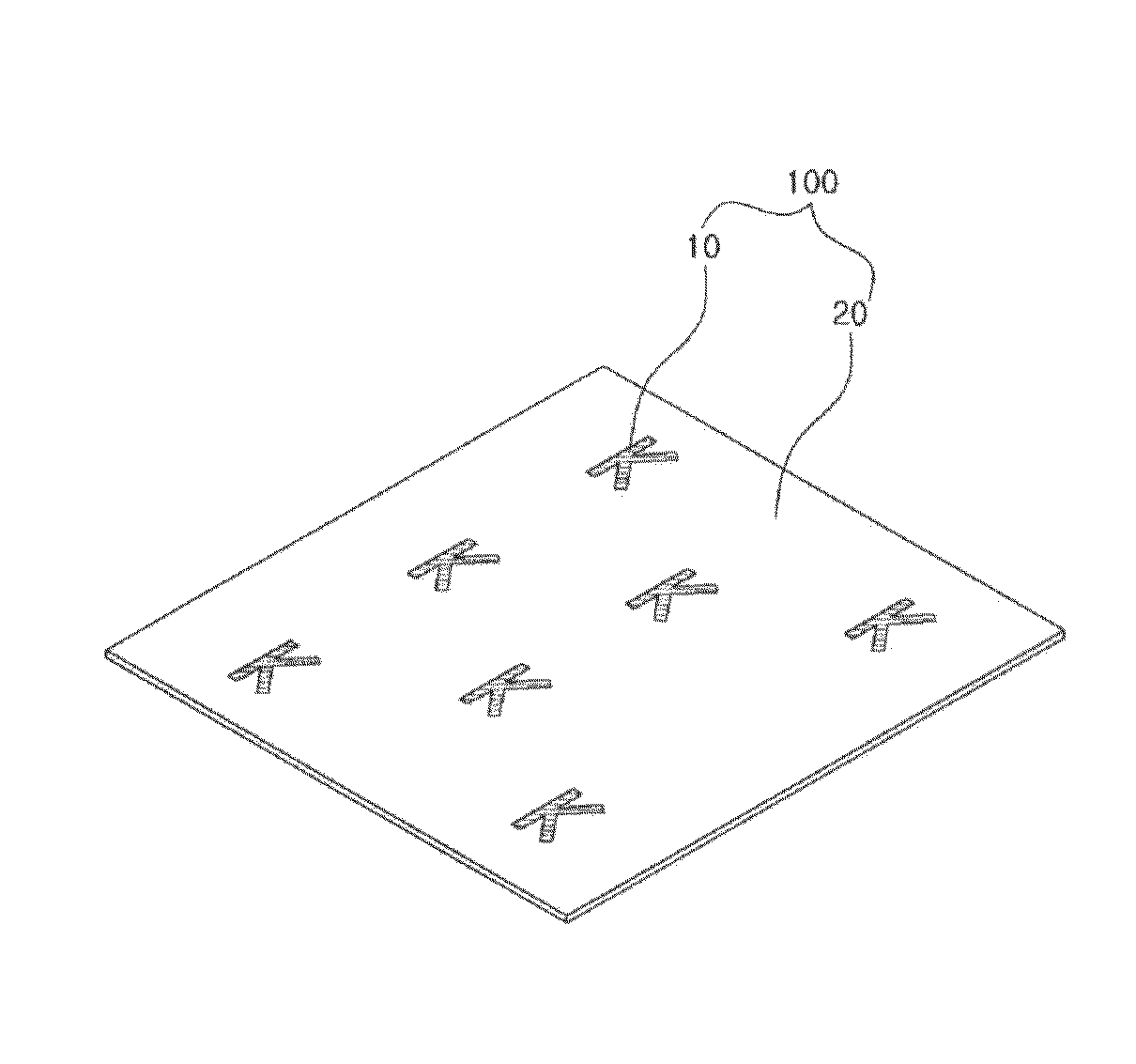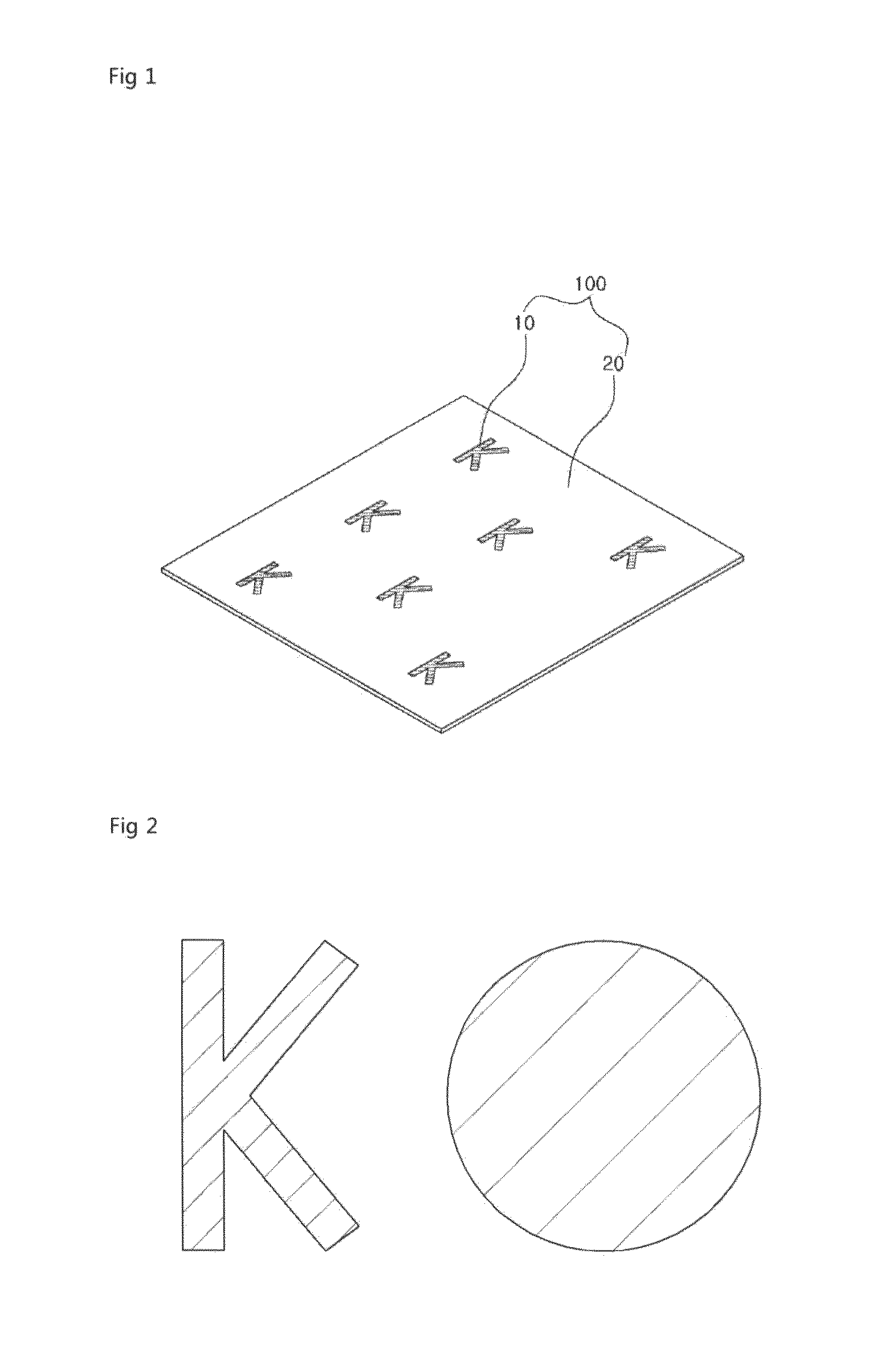Identification Film and Pattern Including Photonic Crystals and Anticounterfeiting Product Including the Same
a technology of identification film and photonic crystals, which is applied in the direction of photomechanical equipment, photosensitive material processing, instruments, etc., can solve the problems of increasing manufacturing time, difficult to practically apply such colloidal crystals, and weak mechanical strength of films in terms of structure, so as to achieve the effect of convenient manufacturing
- Summary
- Abstract
- Description
- Claims
- Application Information
AI Technical Summary
Benefits of technology
Problems solved by technology
Method used
Image
Examples
example 1
Manufacture of Identification Film
[0108]Silica particles having a uniform size of 180 nm prepared using a Stöber-Fink-Bohn method were dispersed in ethoxylated trimethylolpropane triacrylate (ETPTA) in a volume fraction of 0.33, and 2-hydroxy-2-methyl-1-phenyl-1-propanone (Darocur 1173 available from Ciba Chemical) as a photoinitiator was added thereto to prepare a silica dispersion. Subsequently, the silica dispersion was introduced into a space between two glass plates spaced 50 μm apart using capillary force and a photomask (see FIG. 7) with the letter k was positioned on the resulting structure_Thereafter, ultraviolet light generated from a mercury arc lamp was emitted at a luminous intensity of 14 mW / cm2 to the photomask for 10 seconds to cure the silica dispersion and then an uncured portion of the silica dispersion was removed.
[0109]Subsequently, the resulting structure was covered by a glass plate and a photocurable monomer resin (excluding colloidal particles) was injected ...
examples 2 and 3
[0112]Silica particles having a uniform size of 180 nm prepared using a Stöber-Fink-Bohn method were dispersed in ETPTA in a volume fraction of 0.33, and 2-hydroxy-2-methyl-1-phenyl-1-propanone (Darocur 1173 available from Ciba Chemical) as a photoinitiator was added thereto to prepare a silica dispersion. Subsequently, the silica dispersion was introduced into a space between two glass plates spaced 50 μm apart using capillary force. Thereafter, a photomask (see FIG. 7) with a lowercase k as an intaglio was positioned on the resulting structure, ultraviolet light generated from a mercury arc lamp was emitted at a luminous intensity of 14 mW / cm2 to the photomask for 10 seconds to cure the silica dispersion, and then an uncured portion of the silica dispersion was removed.
[0113]Subsequently, the resulting structure was covered by a glass plate and a photocurable silica dispersion (size and volume fraction of silica are 205 nm and 0.33) was injected between the plates (spaced 100 μm a...
example 2
[0115]An uncured portion of the dispersion was washed and the glass plates were removed to obtain an identification pattern including sub-patterns (see FIG. 11).
PUM
| Property | Measurement | Unit |
|---|---|---|
| Color | aaaaa | aaaaa |
| Size | aaaaa | aaaaa |
| Transparency | aaaaa | aaaaa |
Abstract
Description
Claims
Application Information
 Login to View More
Login to View More - R&D
- Intellectual Property
- Life Sciences
- Materials
- Tech Scout
- Unparalleled Data Quality
- Higher Quality Content
- 60% Fewer Hallucinations
Browse by: Latest US Patents, China's latest patents, Technical Efficacy Thesaurus, Application Domain, Technology Topic, Popular Technical Reports.
© 2025 PatSnap. All rights reserved.Legal|Privacy policy|Modern Slavery Act Transparency Statement|Sitemap|About US| Contact US: help@patsnap.com



